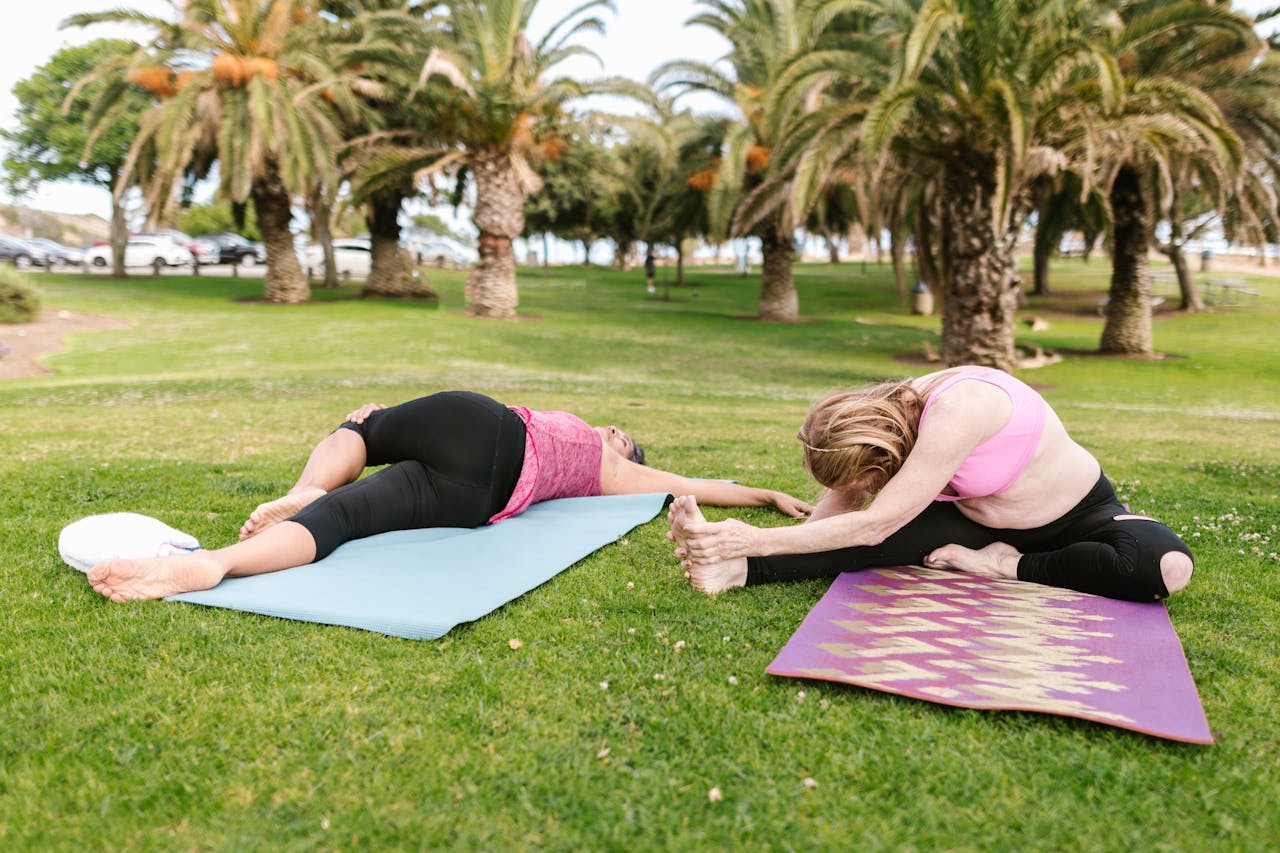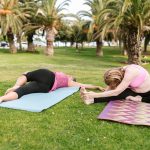Stress often overwhelms our lives. Customized yoga routines offer a powerful antidote, allowing you to tailor your practice to fit your unique needs. Whether you’re a beginner or an experienced yogi, grasping the benefits of personalized sessions can transform your approach to stress relief. Discover how to craft your unique yoga journey, focusing on techniques and sequences that resonate with you. Embrace this opportunity to cultivate harmony, balance, and peace, making stress relief an achievable goal.
Understanding the Importance of Personalized Yoga Routines
Personalized yoga routines offer a tailored approach to stress relief, catering to individual needs and goals. Unlike generic practices, these routines consider personal preferences, physical capabilities, and specific stressors, ensuring a more effective and enjoyable experience.
Topic to read : Finding the Perfect Fabric for Your Body Type: A Guide to Selecting Tailored Suits
Benefits of Personalized Yoga Routines for Stress Management
A personalized yoga practice can significantly enhance stress management. By focusing on unique yoga practices that align with one’s lifestyle and stress triggers, individuals can achieve a deeper sense of relaxation and mental clarity. This tailored approach allows for the incorporation of specific breathing techniques and poses that directly target stress reduction, making the practice more impactful.
How Individual Needs Influence Yoga Practice
Each person’s body and mind are unique, and so are their needs. Personalized yoga takes into account factors such as flexibility, strength, and any physical limitations. This ensures that the practice is safe and beneficial, avoiding any strain or discomfort. By addressing these individual aspects, personalized yoga routines can enhance overall well-being and promote a sustainable practice.
Also read : DIY Face Mask Recipe for Oily Skin: Transform Kitchen Staples into Skin-Saving Solutions!
Importance of Reflecting Personal Goals in Yoga
Incorporating personal goals into a yoga routine can be highly motivating. Whether the aim is to improve flexibility, manage stress, or achieve a spiritual connection, a personalized approach ensures that the practice is aligned with these objectives. This alignment fosters a sense of accomplishment and encourages a consistent and rewarding yoga journey.
Key Components of a Customized Yoga Routine
Creating a personalized yoga routine involves selecting the right combination of yoga poses, breathing techniques, and mindfulness practices. These elements work together to enhance relaxation and stress relief.
Essential Yoga Poses for Stress Relief
Certain yoga poses are particularly effective in alleviating stress. Poses like Child’s Pose, Forward Bend, and Legs-Up-the-Wall are known for their calming effects. These positions help in releasing tension, promoting relaxation, and improving blood circulation. Tailoring these poses to fit individual flexibility and strength ensures a safe and beneficial practice.
Breathing Techniques to Enhance Relaxation
Incorporating specific breathing techniques can significantly boost the calming effects of yoga. Techniques such as Pranayama or deep belly breathing help regulate the nervous system, reducing stress and anxiety. By focusing on breath control, individuals can achieve a state of mental clarity and physical relaxation, which is crucial for effective stress management.
Incorporating Mindfulness Practices into Routines
Mindfulness is a key component of a customized yoga routine. Integrating practices like meditation or mindful observation can deepen the yoga experience. By encouraging present-moment awareness, mindfulness helps individuals connect with their inner selves, fostering a sense of peace and well-being. This holistic approach ensures that the yoga practice is not only physically beneficial but also mentally rejuvenating.
Assessing Individual Needs for Yoga
Understanding your unique requirements is crucial for a successful yoga practice. Self-assessment is the first step, allowing you to evaluate your current physical and mental state. This process involves reflecting on your yoga goals and identifying any limitations or strengths. Ask yourself questions like: What do I hope to achieve with yoga? How does my body feel during different poses? This introspection helps tailor your practice to your needs.
Techniques for Self-Assessment in Yoga Practice
To conduct an effective self-assessment, consider maintaining a yoga journal. Document your experiences, noting any discomfort or areas of improvement. Regularly revisiting these entries can reveal patterns and progress. Additionally, practice mindfulness during sessions to become aware of how different poses affect your body and mind.
Identifying Lifestyle Factors That Affect Yoga Routines
Your lifestyle plays a significant role in shaping your yoga practice. Consider factors like your daily schedule, stress levels, and physical activity. These elements can influence the frequency and intensity of your sessions. For instance, a hectic lifestyle might benefit from shorter, more frequent practices, while a calmer routine allows for longer sessions.
Setting Achievable Yoga Goals
Setting realistic yoga goals is essential for motivation and progress. Break down larger objectives into smaller, manageable steps. For example, if improving flexibility is your aim, start with basic stretches before advancing to more complex poses. This approach ensures a sustainable and rewarding yoga journey.
Creating Your Unique Yoga Sequence
Designing a customized yoga sequence is a rewarding process that allows you to tailor your practice to your unique needs and preferences. Begin by identifying the key poses and techniques that resonate with your body and mind. Consider your goals, such as enhancing flexibility or reducing stress, and select poses that support these objectives.
Steps to Design a Personalized Yoga Sequence
- Assess Your Needs: Reflect on your physical capabilities and mental state. Determine which areas require attention and choose poses that address these aspects.
- Select Key Poses: Pick a variety of poses that target different muscle groups and offer a balanced workout. Include a mix of standing, seated, and lying down positions.
- Incorporate Breathing Techniques: Integrate breathing exercises to enhance relaxation and focus.
- Create a Flow: Arrange poses in a logical sequence that allows a smooth transition from one to the next. This flow is crucial for maintaining rhythm and continuity throughout the practice.
Adjusting Sequences Based on Skill Level
Adapt your sequence to match your skill level, ensuring it’s challenging yet achievable. Beginners might start with foundational poses, while advanced practitioners can explore more complex postures. Regularly reassess and modify your routine to reflect your evolving abilities and goals.
Integrating Yoga into Daily Life
Incorporating yoga into your daily routine can transform your lifestyle, promoting balance and well-being. Establishing a consistent daily practice is key to reaping the full benefits of yoga. Begin by setting aside a specific time each day dedicated solely to your practice. This consistency helps form a habit, making it easier to maintain in the long term.
Creating a yoga schedule that aligns with your lifestyle is crucial. Consider your daily commitments and find a time slot that works best for you, whether it’s a morning session to start the day with energy or an evening practice to unwind. Flexibility is important; allow room for adjustments as your schedule evolves.
To seamlessly integrate yoga into your daily life, start with small, manageable sessions. Incorporate short practices during breaks or lunch hours, making it a natural part of your routine. Over time, these brief sessions can expand into longer practices as you become more comfortable and adept.
Remember, the goal is to make yoga an enjoyable and sustainable part of your day. By aligning your yoga schedule with your lifestyle, you create a harmonious balance that supports both physical and mental health.
Testimonials and Success Stories
Delving into yoga testimonials reveals inspiring personal experiences that highlight the transformative power of personalized yoga routines. These success stories serve as a testament to the profound impact yoga can have on stress management and overall well-being.
Consider the journey of Emily, a busy professional who struggled with chronic stress. Through a tailored yoga practice, Emily discovered specific poses and breathing techniques that resonated with her needs. Her testimonial underscores how personalized yoga helped her achieve a calmer mind and a more balanced lifestyle.
Case studies further illustrate the benefits of customized yoga routines. For instance, John’s story showcases the importance of aligning yoga practices with personal goals. Initially seeking relief from back pain, John engaged in a personalized routine focusing on strength and flexibility. His success story highlights not only physical improvements but also enhanced mental clarity.
Lessons learned from these individual journeys emphasize the value of understanding one’s unique needs and goals. Many practitioners have found that incorporating mindfulness and breathing exercises into their routines leads to significant stress reduction and improved mental health. These testimonials and success stories inspire others to explore personalized yoga, encouraging them to embark on their own transformative journey.
Resources for Further Exploration
Exploring yoga resources can deepen your practice and understanding. For those eager to dive into further learning, a wealth of books and online resources are available. Titles such as “Light on Yoga” by B.K.S. Iyengar offer comprehensive insights into postures and philosophy. Online platforms like Yoga Journal provide a plethora of articles and tutorials to enhance your knowledge.
Engaging with Yoga Communities
Being part of a yoga community can provide invaluable support. Local studios often host workshops and classes that foster a sense of belonging. For those preferring virtual interaction, online communities on platforms like Facebook or dedicated yoga forums offer spaces to share experiences and seek advice. Engaging with others can motivate and inspire your practice.
Opportunities for Continuing Education
Continuing education in yoga is essential for those wishing to expand their expertise. Many institutions offer certification programs and workshops that delve deeper into specific aspects of yoga, such as anatomy or meditation. These opportunities not only enhance personal practice but also equip individuals with the skills to guide others. Whether through books, communities, or formal education, these resources enrich the yoga journey.
Conclusion and Next Steps
Embarking on a yoga journey is a personal and transformative experience, offering numerous benefits for both mind and body. As you begin crafting a personalized routine, remember that the key to success lies in understanding your unique needs and adapting practices accordingly. This tailored approach not only enhances the effectiveness of your practice but also ensures it remains enjoyable and sustainable.
Continuous improvement is vital in yoga, just as in any other aspect of life. Regularly assess your progress and be open to adjusting your routine as your capabilities and goals evolve. By embracing a mindset of growth, you can deepen your practice and reap greater rewards. Setting clear intentions for the next phase of your yoga journey can provide motivation and direction. Consider what you aim to achieve, whether it’s increased flexibility, stress relief, or a deeper spiritual connection.
- Start small: Begin with manageable sessions and gradually increase the complexity and duration as you gain confidence.
- Stay committed: Consistency is key to progress, so make yoga a regular part of your routine.
- Seek support: Engage with yoga communities for inspiration and guidance.
By focusing on these next steps, you can cultivate a fulfilling and enriching yoga practice.











